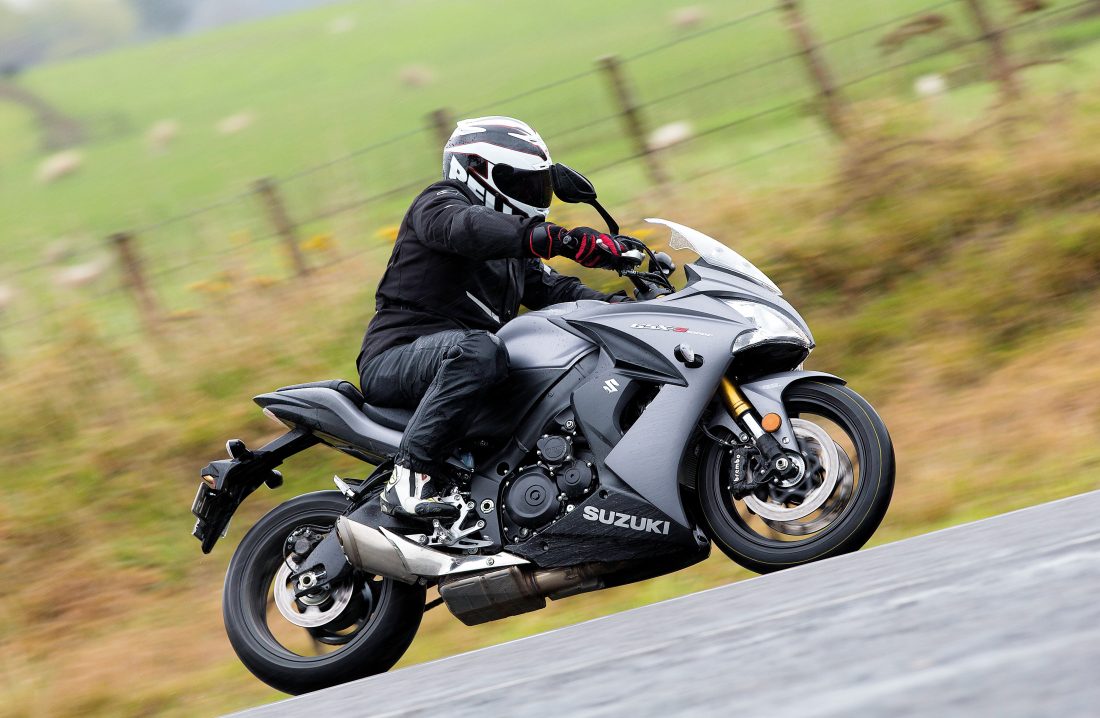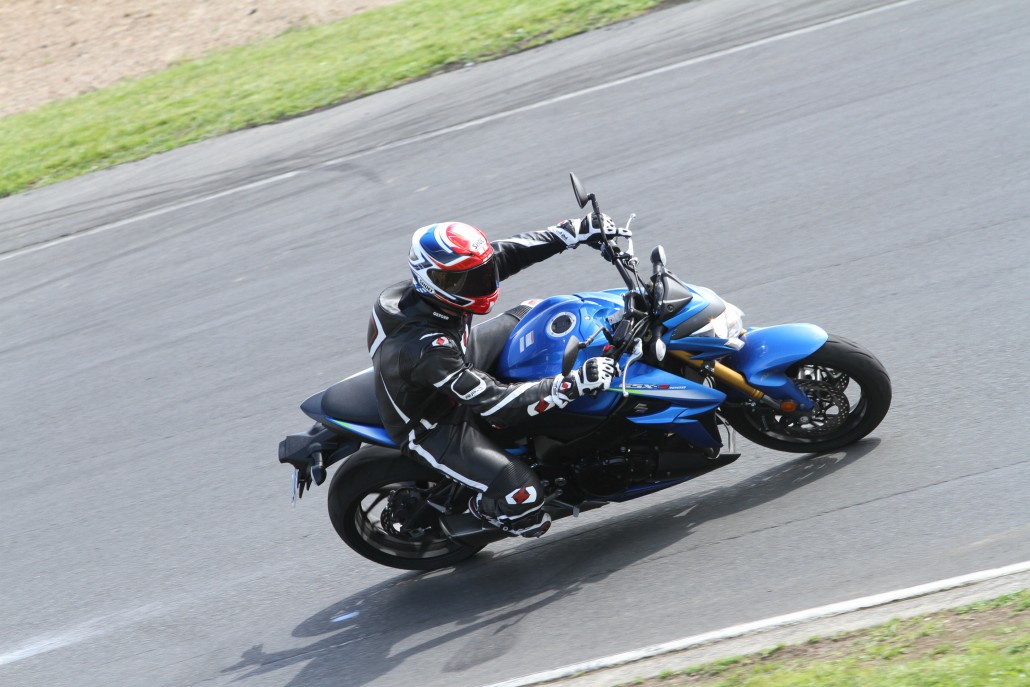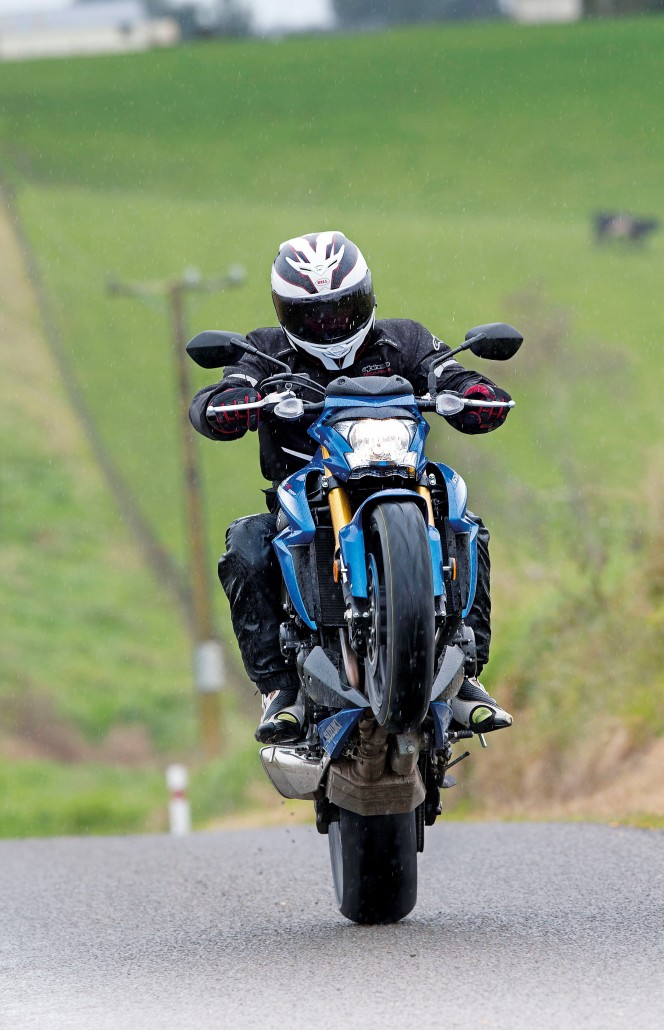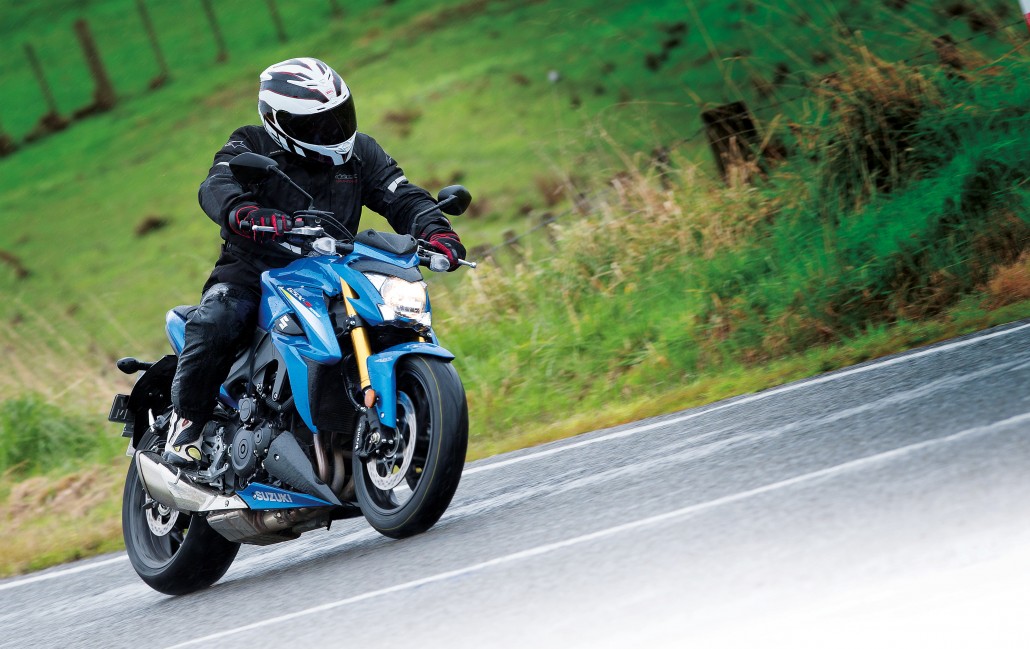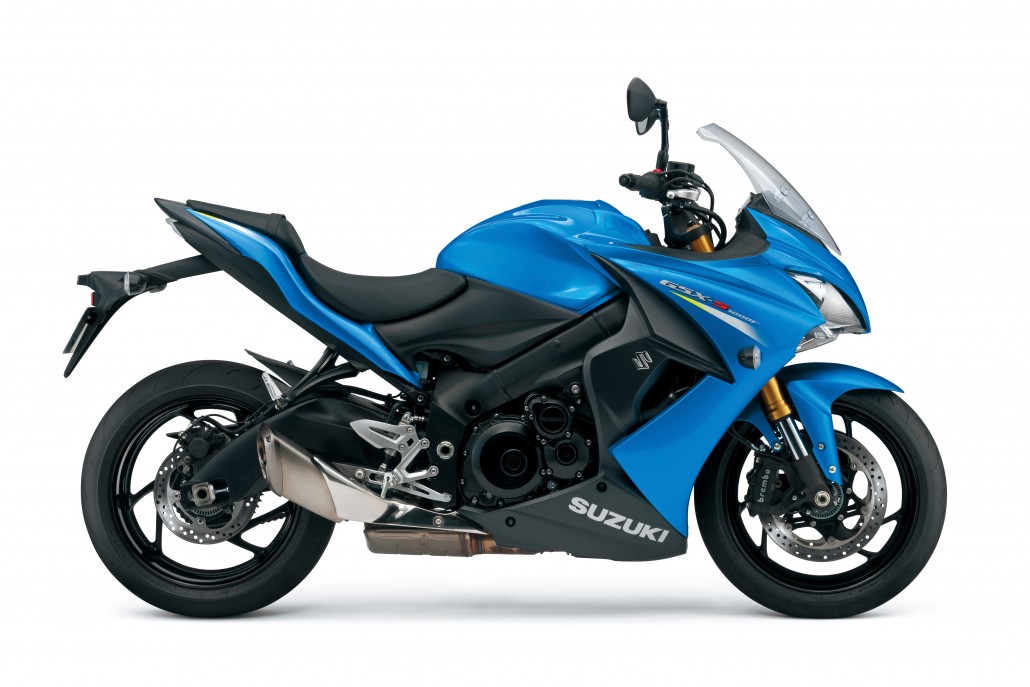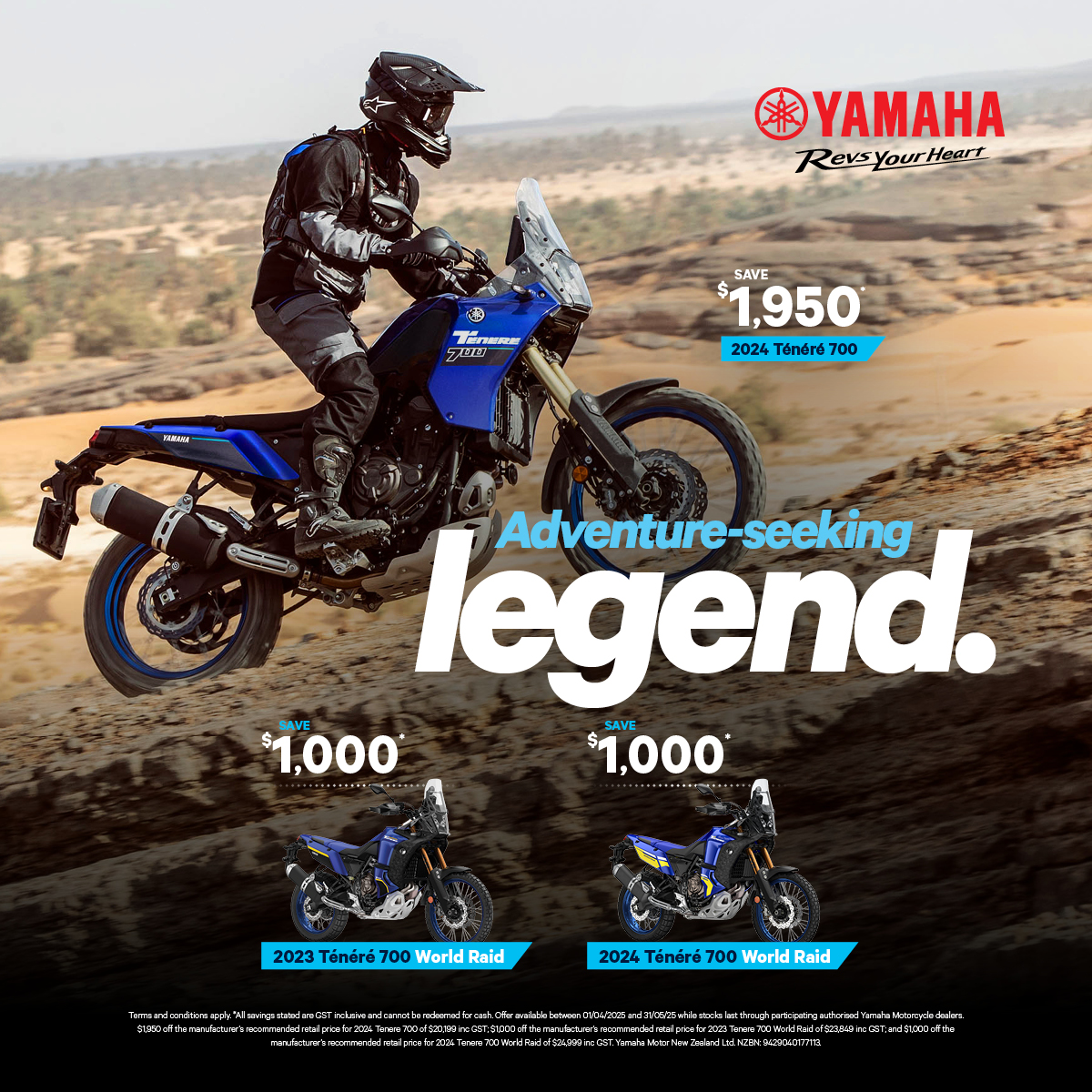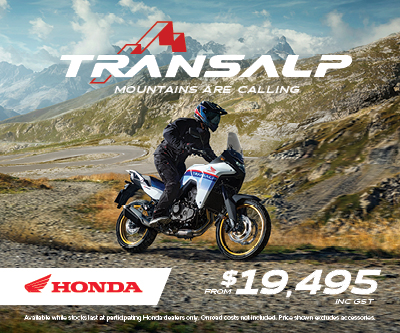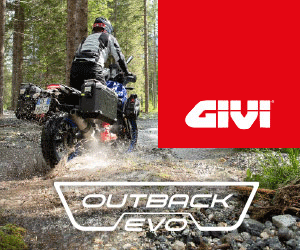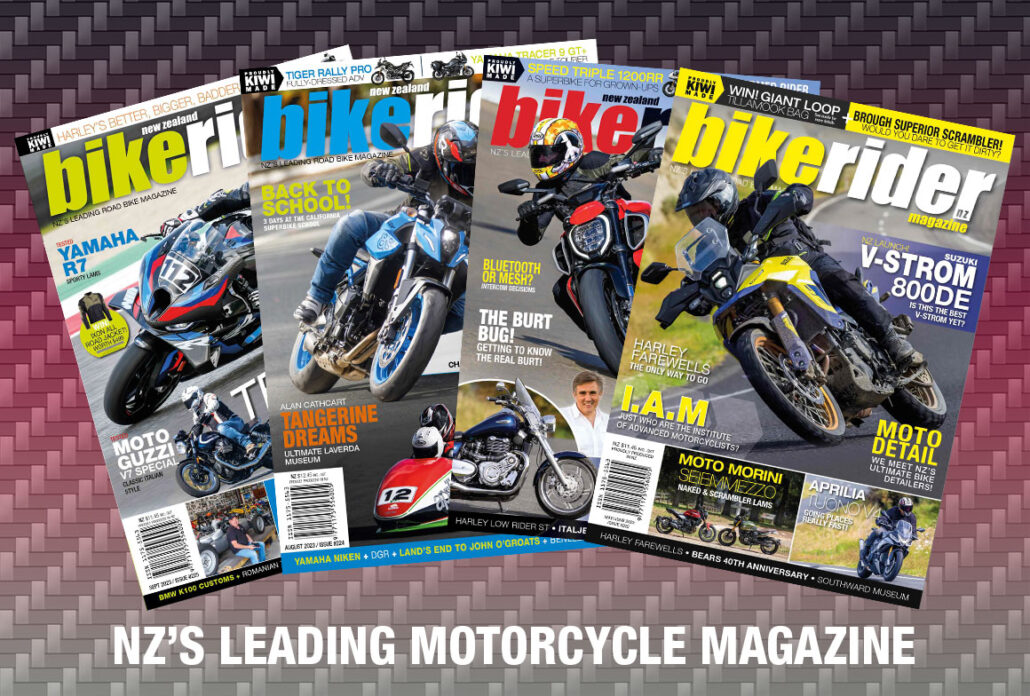Suzuki GSX-S1000
Ode to the Faithful
GSX-R1000 fans have been virtually prostrate in deference at the wheels of the beloved ‘K5’ ever since, well, 2005 as it happens. Having just tested the new GSX-S1000 that continues that revered lineage, we reckon they have a valid point.
Words Paul Photos Geoff Osborne
We’ve had the international launch reports from Roland in previous issues of BRM, but Suzuki New Zealand obviously considered the naked Gixxer important enough to warrant a local launch. So it was that I found myself on a rather small plane heading for the dazzling lights of Palmerston North (or is that North Palmerston?), where we were presented with the new model over a beer and a steak. A simple yet effective affair, which pretty much sums up the qualities of the new GSX-S.
Kinda All New
Looking over the GSX-S and it’s still staggering that Suzuki didn’t do this a decade ago, with the transformation from sports bike to naked not really requiring that much. The frame is new, designed to provide nimble handling and incredibly weighs less than the current GSX-R1000 item, yet it doesn’t stray too far from the classic GSX-R style. The suspension is specifically designed, with the 43mm KYB USD forks provided with full adjustment but featuring a softer, more compliant set-up than the superbike, while the rear shock is slightly more basic with adjustment only available for spring preload and rebound damping. That being said, I was to find out it still manages to do an excellent job of soaking up the rough and bumpy road surfaces here in Godzone.
The engine itself is still very close to the 2005 GSX-R1000 that it is sourced from, with this incarnation of the famous Gixxer dynasty regarded as having the best midrange and flexibility of any of the models. New cam profiles combined with specific CDi settings and Suzuki’s dual throttle valve system have changed the delivery to supply even more punch at the lower-to-mid area of the rev range, but the GSX-S still has a pretty healthy top-end, with max power claimed to be 107kW @ 10,000rpm. The rev ceiling has been lowered for the GSX-S as no-one really wants to be riding a road bike at 14,000rpm, but it still pulls like a GSX-R should when you hold the throttle to the stop in a test to see how strong your neck muscles are. The power is addictive, probably enhanced by the airbox which has been modified to give a raucous sound every time you open the throttle.
The GSX-S is fitted with a new 3-stage traction control system which can also be turned off, although it’s a shame that they didn’t see fit to add the switchable power modes that the superbikes get. Still, the system is able to be adjusted on the fly which is useful, especially as the GSX-S is possibly one of the best wheelie bikes you’ll find on the market today. Levels 2 and 3 keeps rear wheel slippage to a minimum and also stops the front hoop from leaving the tarseal, although level 1 allows you to have fun while still giving you a touch of rear wheel slippage control. Turn the system off though and the GSX-S will lift the front wheel in first, second and third gears (with a bit of provocation), with the flat Renthal handlebars harking back to the days of home-built street fighters, something that the GSX-S could turn its hand to easily.
Kool For Kiwi
With the lowest seat height in the class at 810mm, the GSX-S is a comfortable place to be, with a confidence inspiring riding position thanks to being able to get your feet flat on the floor and a good grip on the wide bars. The saddle is sculpted slim at the front to aid the reach to the ground even further, while also providing a decent amount of padding that makes all-day riding a reality. If that’s what you’re planning then maybe take a look at the faired FA version of the GSX-S, with the small nose fairing doing enough to take a majority of the windblast away from you at higher speeds. It’s just a shame that the same level of comfort hasn’t been afforded to the pillion, with a small seat and high pegs making it only slightly more accommodating than the superbike models. Plus, the subframe is limited to an all-up weight of 400kilos meaning you can’t pile a pillion and luggage on without the risk of overloading.
The dash is again all-new, with a single LCD screen giving you everything you need. The tacho across the top is easily readable, although with a powerplant so flexible, you hardly have to worry about where the revs are sitting to get decent drive. A gear indicator sits next to the traction control display, while fuel is taken care of down the bottom of the screen and modes are selected with a push of the button on the lefthand cluster. With the new dash also significantly lighter than the current GSX-R instrument panel and with their first superbike-based model to get traction control, it shows that Suzuki aren’t thinking of the GSX-S as a “budget” bike, instead using it to showcase advancements in their technology and certainly showing this a model that’s going to be an integral part of their line-up.
With springtime in New Zealand often changeable weatherwise, it was looking bad enough that Suzuki almost pulled the launch before it started, with the forecast for torrential rain and not much else. They didn’t pull it and the forecast was right, with black skies and consistent heavy downpours greeting us as we gathered at Suzuki HQ in Whanganui. That made the one FA model hot property, with the three of us present all eyeing up the fairing and the promised increase in weather protection seeming the sensible option.
With the traction control dialled up to level 3 to hopefully catch any slides on the wet streets, it didn’t take long to work out that the Dunlop tyres that were especially developed for the GSX-S provided excellent wet weather grip, with confidence growing in all of us the more we rode and the faster we got. Before long the traction control was being dialled down and despite the roads never drying, the GSX-S showed us just how wild it could be. With such a linear power delivery, the GSX-S never felt like it would catch you out when the revs were climbing, especially with Suzuki’s dual throttle valve system making the fuelling so exact. Pulling from almost nothing, the power comes in as a steady stream from bottom to top, making for effortless and controllable stunting along with helping inspire confidence when cracking on the throttle earlier coming out of turns. Okay, it’s not got the most power in the class (although rumour has it Suzuki understate their quoted power figures), but it certainly should take the award for the smoothest delivery and ease of use, making blasting along back roads its happy place.
Added to the excellent power delivery is a braking package that is up there with the best, with the Brembo mono-bloc calipers looking like they’ve come straight from the superbike parts bin. I was concerned that with such an easy-to-ride package the power of the Brembos might be a bit abrupt, but I was pleased to find a relatively soft lever providing an impressive amount of feel meant that braking could be taken to the edge of available traction without overstepping the mark, even in the treacherous conditions we were testing in.
With the launch wet from the get go, I asked Suzuki if we could take a GSX-S home for a while to see what it’s like to live with, which saw Kev leave from Suzuki dealer, Boyds, in Hamilton and head south to Wellington.
Kev’s Long Way Home
Okay, so I took the long way to Wellington as well as a convoluted but epic return trip on the Suzuki GSX-S1000. Heading out from White’s Powersports (picked up a new Shoei NXR as well as an Oxford Copenhagen 2.0 jacket and Continental 2.0 pants) in the Tron. I headed west to pick up the back road to Otorohonga, by which time it was raining cats and dogs, over to Taumaranui and onwards to National Park, where it was now dark as well as sleeting. From there it was damp and breezy to the capital. The return trip involved Makara Beach, an awesome wee twisty road that avoided town as I headed for a spin up Paekakariki Hill, headed east around Palmy before zigzagging to Wanganui, up the still battered Paraparas before turning up Fields Track, a 65km narrow, winding deserted (but sealed) road towards Ohakune. From there it was National Park (I know, used the same stretch twice – sorry) and west of Taupo before taking the Old Taupo Road north from Tokoroa, swapping across to Okoroire, Old Te Aroha Road and back to Paeroa. Not the most direct route but on Suzuki’s new sporty naked model, it was fantastic – and it was fine all the way home.
So what did I think as I shut the S down at home? I’m a new member of the ‘K5’ fan club. Although retuned for use in the new model, using 2007 GSX-R1000 throttle bodies and injectors, milder profiled cams and redesigned heads to boost the already strong mid-range of the long-stroke Gixxer (longer than the later ones) and a familiar looking but totally new frame with a longer swingarm, Suzuki have pulled one out of the bag. In an ideal world, I’d like a more compliant rear shock but even then, only because the bike is so capable and flexible that it deserves one. The stock unit is pretty decent but does feel the square-edged bumps a bit much. Still, with a price tag of $17k, tweaking that shock won’t form a bead of sweat if you felt like going there.
Comparing the new Suzuki GSX-S1000 against the likes of the booming KTM 1290 Super Duke, Aprilia’s new 1100cc Tuono and BMW’s S 1000 R and finding areas where it isn’t quite as good, like suspension quality, is actually a huge compliment, with the European contingent starting over $8,000 further up the scale. On the Paraparas and in particular Fields Track, that smooth wide power spread makes up for the outright power deficit and for many, a mere 146hp is plenty. If Suzuki wanted to put more horses into the new models, they could have. They stuck to their guns and went for a useable power delivery, smart gearing and decent ergos – and smacked the nail on the head.
I clocked up 1500km on the weekend and really enjoyed the bike. Then we headed to the track…
With the Auckland Motorcycle Club having an ART (Advanced Rider Training) day, we headed out to see how the ‘roadified’ Gixxer coped. As it happens, the bike felt quite at home – possibly some genetic memory deal there. It is a tad snatchy coming off a closed throttle in the slower corners, helped by adjusting the idle up so it wasn’t picking up from the floor each time. Being set up as a great road bike, it is on the soft side when let loose on track, but really, it impressed almost as much as on the road. So if you want a naked machine that is still a giggle at track days, it’s worth a look for sure. The traction control is a handy addition too, as when the drizzle came, you could feel it lending a helping hand when it’s deliberately asked to demonstrate. It’s reassuring to know it’s got your back if an unexpected loss of traction occurred. In the least intrusive mode, it’ll still let a slide start but is likely to avoid the orbit but no system is foolproof, so don’t hang your wet weather riding skillset up yet.
Clothes On
If you aren’t into being naked, then there’s a clothed version of the GSX, the FA model. With only a 5kilo increase in weight, you’d think you’d barely be able to tell the difference between the two, but that slopping front adds four times more downforce to the front wheel. Because of that, the forks receive more oil to keep them higher in the stroke, but the FA not only gives you more wind protection, it improves front-end grip as well.
Final Trick
Starting a Suzuki has always required you to pull the clutch in and press the starter till the motor fires up. Not anymore. The GSX-S is the first model to not only be able to be started without pulling the clutch in (if the bike is in neutral), but it also features a “one-touch” starter button, which cranks the motor for 1.5seconds with a single touch.
Specifications
Suzuki GSX-S1000A (FA – faired)
Price: $16,995 ($17,995) + on-road costs
Engine: In-line four, liquid-cooled DOHC
Bore and stroke: 73.4 x 59mm
Displacement: 999cc
Compression ratio: 12.2:1Transmission: 6-speed
Oil capacity: 3.4litres
Maximum power: 107kW (143.4hp) @ 10,000rpm
Maximum torque: 106Nm @ 9500rpm
Wheelbase: 1460mm
Rake/trail: 25degrees/ 100mm
Curb weight: 209kg
Seat height: 810mm
Fuel capacity: 17litres

